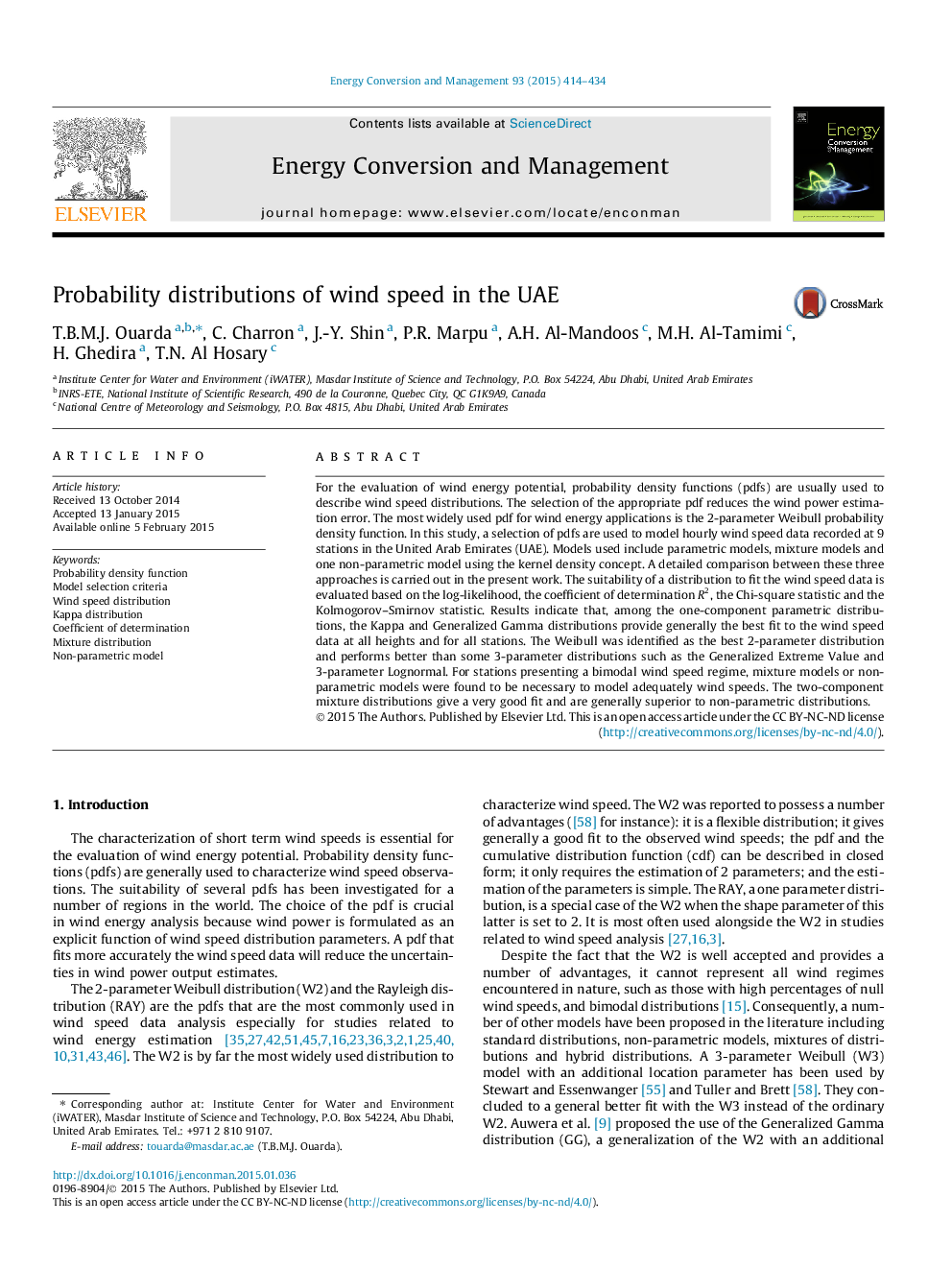| Article ID | Journal | Published Year | Pages | File Type |
|---|---|---|---|---|
| 7162915 | Energy Conversion and Management | 2015 | 21 Pages |
Abstract
For the evaluation of wind energy potential, probability density functions (pdfs) are usually used to describe wind speed distributions. The selection of the appropriate pdf reduces the wind power estimation error. The most widely used pdf for wind energy applications is the 2-parameter Weibull probability density function. In this study, a selection of pdfs are used to model hourly wind speed data recorded at 9 stations in the United Arab Emirates (UAE). Models used include parametric models, mixture models and one non-parametric model using the kernel density concept. A detailed comparison between these three approaches is carried out in the present work. The suitability of a distribution to fit the wind speed data is evaluated based on the log-likelihood, the coefficient of determination R2, the Chi-square statistic and the Kolmogorov-Smirnov statistic. Results indicate that, among the one-component parametric distributions, the Kappa and Generalized Gamma distributions provide generally the best fit to the wind speed data at all heights and for all stations. The Weibull was identified as the best 2-parameter distribution and performs better than some 3-parameter distributions such as the Generalized Extreme Value and 3-parameter Lognormal. For stations presenting a bimodal wind speed regime, mixture models or non-parametric models were found to be necessary to model adequately wind speeds. The two-component mixture distributions give a very good fit and are generally superior to non-parametric distributions.
Keywords
Related Topics
Physical Sciences and Engineering
Energy
Energy (General)
Authors
T.B.M.J. Ouarda, C. Charron, J.-Y. Shin, P.R. Marpu, A.H. Al-Mandoos, M.H. Al-Tamimi, H. Ghedira, T.N. Al Hosary,
